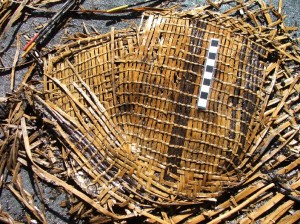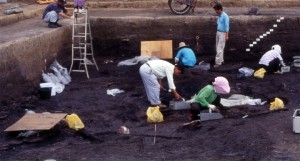 I wanted to post this recent Washington State University posting of my ongoing Adjunct Faculty status since it has web links to many of my Wet Sites related articles through the years. We also provide wet site wood and fiber cellular ID and conservation services through the Pacific Northwest Archaeological Services–contact us through dcroes444@gmail.com if you would like help with a wet site project. Thanks, NewsWARP American Coordinator, Dale Croes Dale Croes WSU Adjunct Faculty
I wanted to post this recent Washington State University posting of my ongoing Adjunct Faculty status since it has web links to many of my Wet Sites related articles through the years. We also provide wet site wood and fiber cellular ID and conservation services through the Pacific Northwest Archaeological Services–contact us through dcroes444@gmail.com if you would like help with a wet site project. Thanks, NewsWARP American Coordinator, Dale Croes Dale Croes WSU Adjunct Faculty
Charred, Uncharred, or Absent: The Potential for Organic Preservation and What to do About it….
In her well illustrated report, Melanie Diedrich of Archaeological Macroflora Identification (AMI) provides a general overview of organic preservation potential and sampling methodology. She answers these questions: What are we looking for? Where are they found? Why are they found there? And how do we sample for them? Charred, Uncharred, or Absent—The potential for organic preservation and what to do about it….
Melanie Diedrich, of Archaeological Macroflora Identification (AMI) based in Olympia, WA., USA provdes soil processing services, identification of seeds and other plant remains, and artifact illustration services.
Qwu?gwes Wet Site Basketry, Cordage and Woodworking–Draft Final Report
As a wet site, Qwu?gwes preserves the major component of material culture used by Northwest Coast Indians—wood and fiber items. In this Draft Final Report the debitage and discrete artifacts of Qwu?gwes are discussed: ancient basketry, cordage, cherry bark binding elements and woodworking. For each of these major artifact categories, it was decided to discuss both the debitage and discrete artifacts together since debitage, especially basketry waste elements and woodchips, represent the construction of the discrete fiber and wood artifacts. Please provide any comment concerning this draft as we prepare to finalize:  Qwugwes Wet Site Basketry and Cordage–Draft Final Report 4-1-13 
Hoko River Wet Site Newsbulletins 1981-1983–a Public Oriented Publication
From 1981 through 1983 we developed a public news bulletin to create membership for the Hoko River Wet Site Project near Neah Bay Washington, USA. Since these news bulletins contain some interesting history and illustrated research, we are publishing them here as a public-oriented presentation. Hope you find them interesting–certainly was a different time for wet site archaeology and field logistics: https://docs.google.com/file/d/0B2PkNNKTY-n5YkhkdlRiYUlMZDQ/edit?usp=sharing
P.S. Since this is such a large file I placed it into Google Drive–to open click on Download, Download anyway, and Open to view.
Sinchangdong Wetland Site in Gwangju, KOREA
Akira Matsui, NewsWARP’s Asia Coordinator, provides this update report on a major wetland site in Korea. The Sinchangdong wet site contains an abundance of agricultural remains originating from the period between the late 2nd B.C. to 3rd A.D. century.  The site contains three ditch features with a U-shaped cross-sectional view, one of which one contains large wooden posts measuring 25cm in diameter erected at regular intervals, along with a door panel. Archaeologists believe that they are the remains of a raised-floor building used as a storage facility or workshop. Found in another ditch were a line of smaller wooden posts measuring 5 to 10cm in diameter, which were probably used to set a net for fishing. Please see the full report at: Sinchangdong Wetland Site in Gwangju, KOREA
- «Previous Page
- 1
- …
- 3
- 4
- 5
- 6
- 7
- 8
- Next Page»
